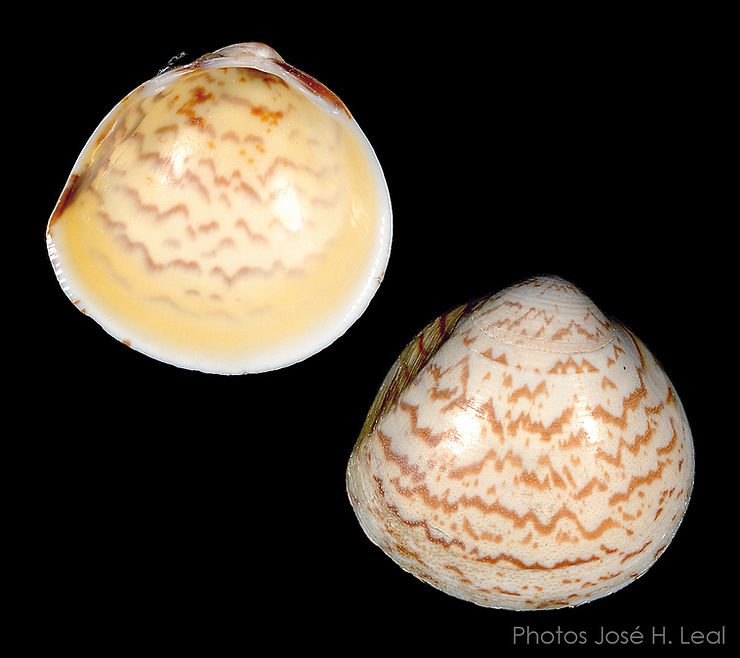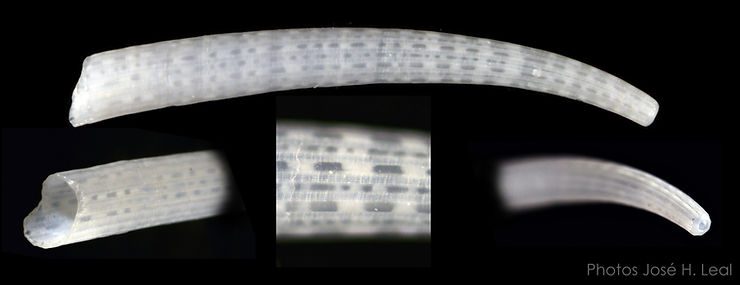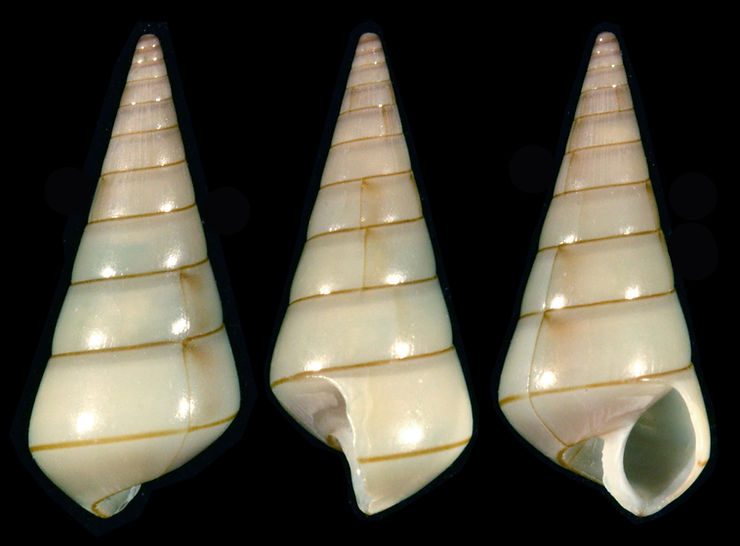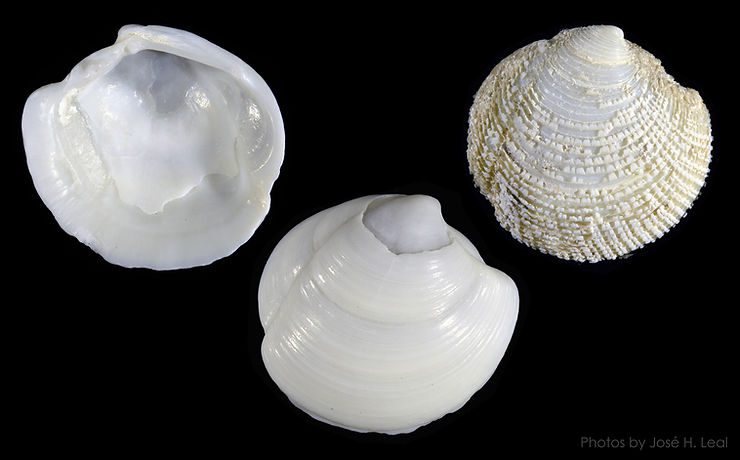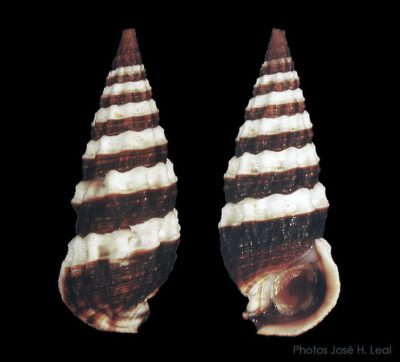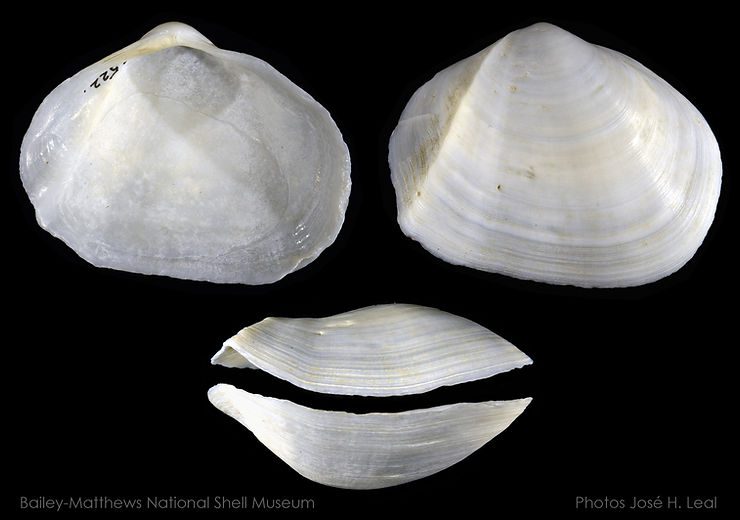
The Antillean Sphenia
The Antillean Sphenia, Sphenia fragilis (H. Adams & A. Adams, 1854) is a locally uncommon species of bivalve that reaches a little less than a half-inch in size. The shell is roughly rectangular, very thin and brittle, and chalky-white, with a very thin, yellowish-brown periostracus (the organic outer shell layers). In some cases, the shell extends posteriorly to form an elongate siphonal tube that may be as long as the rest of the shell; this tube is reinforced by a thicker periostracum. Spheni
